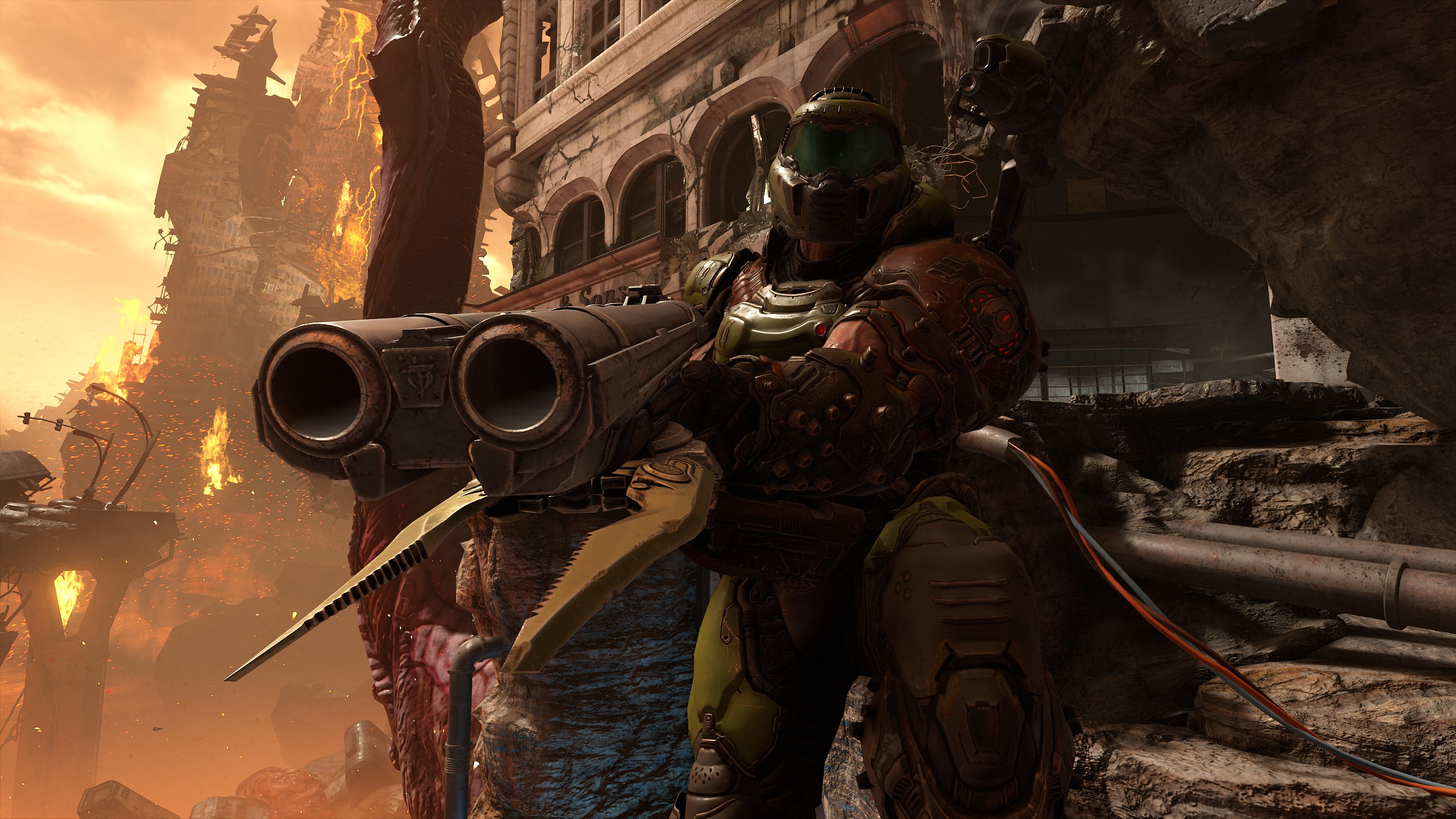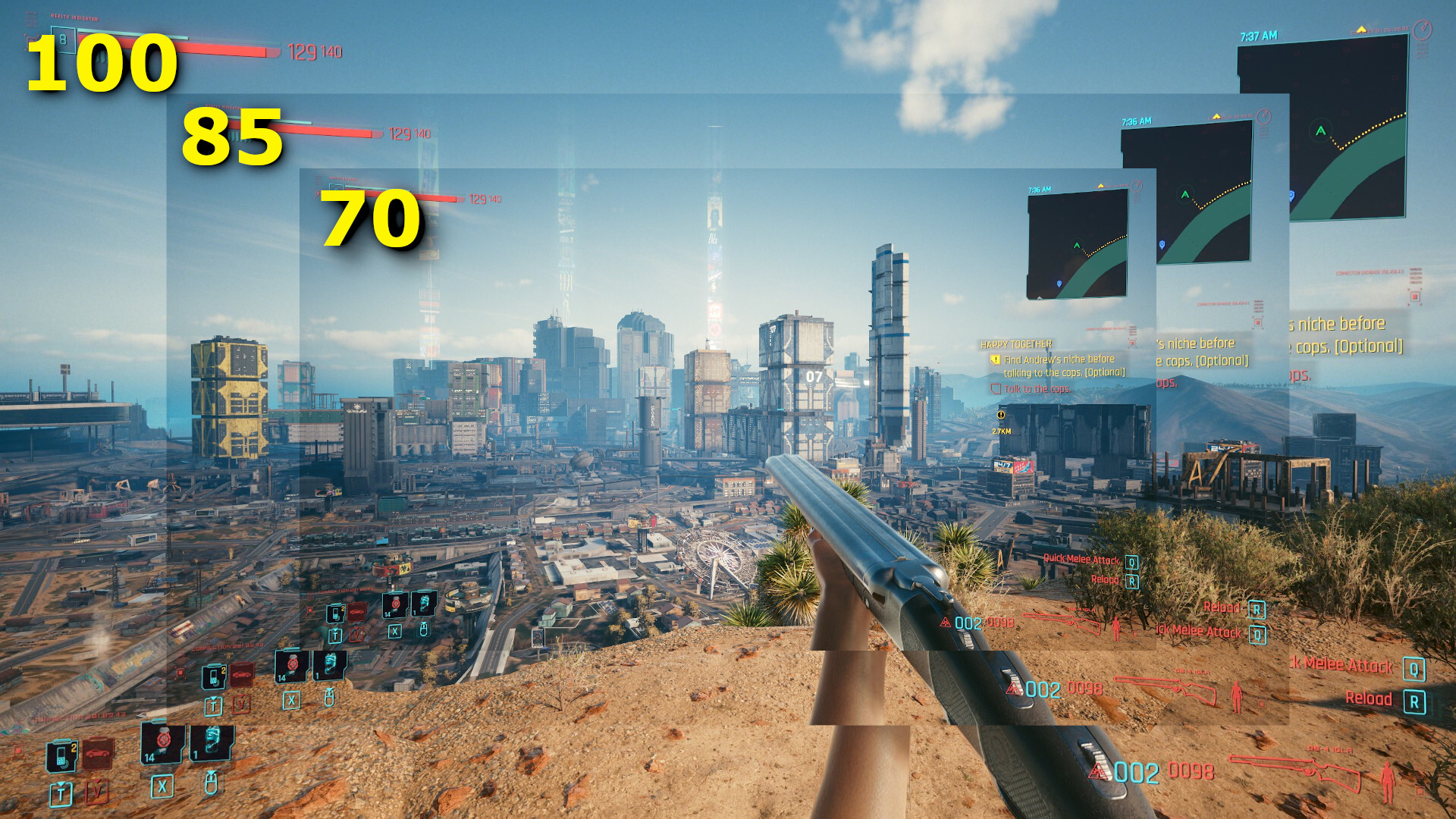Why low FOV in first-person games can make you feel nauseous
Here's what's happening in your brain when a too-low (or too-high) FOV makes you feel headachey or motion sick.

The FOV slider is the single most important graphics option in gaming by at least one metric: it can literally stop a game from making you feel sick.
In 2006, I got more headaches from The Elder Scrolls 4: Oblivion than I did from cramming for school exams. I played days upon days of Oblivion, but not on a PC—I was stuck on an Xbox 360, which was new and shiny but still barely capable of running Bethesda's new RPG. Every play session more than an hour gave me a dull headache, which I blamed on simply too much Oblivion. It wasn't until years later that I found forum threads online with people complaining about the same thing—and they blamed Oblivion's particularly narrow field of view, or FOV, for giving them headaches or even making them nauseous.
But game developers will tell you: finding the right FOV is not as simple as it looks. "FOV is a bit of a tricky thing," says Sébastien Laurent, technical director at Hunt: Showdown and Crysis developer Crytek. "It sounds straightforward at first, it's 'just' the angle of vision that you want to give the player. It seems to be a simple balance between providing the user all the relevant information all the while providing an image that looks good."
PC players often prefer a wider field of view, which offers more peripheral vision. That spatial awareness can be clutch when someone tries to flank you in a first-person shooter. But the advantage of a narrower field of view is that everything on the screen is closer together and easier to see because they take up more space. The more pixels the head you're trying to shoot takes up on the screen, the easier it'll be to shoot.
FOV sliders let players find our own sweet spot, but they're rarely an option in console games today, let alone back in 2006.
"When it comes to consoles, the performance is a way more critical subject, and a larger FOV, even if it implies the same number of pixels to shade, leads to a direct increase in scene complexity," Laurent says. "The wider the FOV, the more objects can land in the view of the users and need to be rendered, the more shadows need to be calculated, the more complex the occlusion computations get, etc."

For a cutting-edge open world game like Oblivion, a narrow FOV meant a mostly stable framerate. But why did that more enclosed view of the world leave some of us feeling hungover after a couple hours of bashing river crabs? Basically, your body thinks you ate some bad meat.
Keep up to date with the most important stories and the best deals, as picked by the PC Gamer team.
Okay, that explanation requires some context, which Jordan DeLong, who has a PhD in psychology focused on perception and cognition, was happy to provide. One key detail: Some of us are far more sensitive to a mismatched field of view than others.
"If it's a flight simulator where the vision doesn't match the [movement], it's actually fighter pilots that get motion sick first, because they have such a fine-grained expectation of how they should be moving," he says. "If you put them in a simulator and it's not the same, their brain goes 'oh, something's off.' They have a finely honed expectation of what their physical reality should be like, given [what they're seeing]. It's a feedback loop, so that sets them off."

Jordan DeLong has a PhD in psychology focused on perception and cognition from Cornell University. After working as a professor at several universities, he's now "a Senior Data Scientist at Eysz, a med-tech startup that focuses on transforming epilepsy care. He utilizes psychological theory, machine learning, and good-old fashioned research design to separate the signal from the noise."
Even those of us who aren't fighter pilots have a lifetime's experience of moving through the world, which is why a first-person game with an FOV too divorced from our natural vision can be jarring. But why is motion sickness our body's response? Enter the bad meat, and bodily reflexes that date back to our earliest caveman days.
"We're not good at detecting if we've been poisoned, whether some food was bad, or whether what you drank had something in it," says DeLong. "You can imagine in the past you're rolling around and eating different things, trial and error. Well, one of the best ways that you can detect whether you've been poisoned before any of the other symptoms is that there is a desynchrony between your perception and your motor system. Normally they're in sync with each other…
"When there's a disconnect between those two, it's usually, in a naturalistic sense, because you've been poisoned with something, or maybe you drank something on purpose or accidentally, that altered your perception. The nausea is your body trying to get you to throw up whatever you have eaten that has screwed up your proprioception, perception motor system. That's all it is."
I'm a little surprised that people think one FOV is just better than the other. No.
Jordan DeLong
In games this is most often blamed on a narrow FOV, but a too-wide FOV can cause the same bodily reaction—you're probably just more likely to notice a super-wide 'fish eye' field of view looks odd, and dial it back before feeling queasy.
"You would love for the FOV of the camera in the game to mimic the FOV of you actually moving through the actual world," he says. "And that's going to be different based on the actual size of the screen and how close it is to you. When I'm playing, I like to have the screen real close. And that kind of changes my opinion of what the FOV setting should be. Because if it's further away, well, then you'd actually expect it to be a narrower field than if you're up close, you expect it to be wider."
The closer your FOV setting comes to mirroring the portion of your vision the screen in front of you takes up, the more intuitive sense it will make to your brain. This is why there's no such thing as the "best" FOV for any game: that number will vary dramatically based on how big your screen is and how close you are to it.
DeLong stresses that despite the motion sickness a less-than-ideal FOV can cause, we're exceptionally good at adapting. "There are a lot of keyboard warriors online that will say, 'the exact right field of view is this.' You know, you can get used to a lot of different stuff… That's something that your visual system is actually pretty good at doing, adapting and understanding. It takes a little while, but you can. I'm a little surprised that people think one is just better than the other. No. It's literally a personal, perceptual thing."

Wes has been covering games and hardware for more than 10 years, first at tech sites like The Wirecutter and Tested before joining the PC Gamer team in 2014. Wes plays a little bit of everything, but he'll always jump at the chance to cover emulation and Japanese games.
When he's not obsessively optimizing and re-optimizing a tangle of conveyor belts in Satisfactory (it's really becoming a problem), he's probably playing a 20-year-old Final Fantasy or some opaque ASCII roguelike. With a focus on writing and editing features, he seeks out personal stories and in-depth histories from the corners of PC gaming and its niche communities. 50% pizza by volume (deep dish, to be specific).

